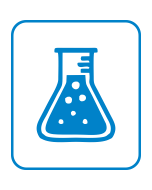Generic Pharmaceutical Market in Kenya and Nigeria, Forecast to 2022
Generic Pharmaceutical Market in Kenya and Nigeria, Forecast to 2022
Greater Regulatory Control and a Shift of Focus Away from Costly and Branded Drugs will Increase Generic Drugs’ Market Share
10-Apr-2019
Africa
$3,000.00
Special Price $2,250.00 save 25 %
Description
The African continent grapples with a huge burden of communicable diseases, particularly HIV/AIDS, tuberculosis, and malaria. With African governments facing major health financing challenges, a significant proportion of these disease areas are financed by global aid organizations that are also helping in poverty eradication in the continent. Parallelly, with each passing year, the incidence of non-communicable diseases has also been on the rise, along with the rising incomes of the African people. With rising incomes, there is greater indulgence in Westernised diets and unhealthy lifestyles that involve high alcohol intake and tobacco smoking.
The pharmaceutical market in Africa has had to keep up with these trends, providing the necessary medicines to combat the various diseases affecting people in African countries. While branded medicines have dominated the pharmaceutical market in the past decades, the current situation seems to favour the generic alternatives instead, as these achieve similar therapeutic outcomes. Taking into consideration the major financing challenges mentioned above, price becomes a key negotiating factor, resulting in governments focusing on acquiring the cheapest drugs in the global market.
Moreover, the supply chains and distribution channels in countries such as Kenya and Nigeria cater to more than 240 million people collectively. These channels are often overwhelmed, particularly with the additional challenges posed by an underdeveloped regulatory environment. This has led to a stronger focus on developing local pharmaceutical capabilities amongst both private and public sectors to cut down on imports that have historically been subject to exchange rate fluctuations. Interest in local manufacturing is growing, and governments are slowly transforming the regulatory environment to create a more conducive operating environment for pharmaceutical investors.
Research Scope
The study covers the following pharmaceutical therapeutic segments: anti-infective, cancer, cardiovascular, central nervous system, diabetes, and respiratory.
Research Highlights
- Market overview and projections for the generic pharmaceutical market (2017–2022)
- Pharmaceutical supply chain analysis and discussion for Kenya and Nigeria
- Revenue forecast for the generic pharmaceutical market in each country
- Key trends, key participants, participant strategies, competitive environment analysis, and growth opportunities
- Strategic recommendations and future outlook of the generic pharmaceutical market
Key Issues Addressed
- What is the generic pharmaceutical market size in Kenya and Nigeria?
- How is the pharmaceutical supply chain structured in these two countries?
- Who are the key generic pharmaceutical suppliers in Kenya and Nigeria?
- Who are the key distributors in the Kenyan and Nigerian generic pharmaceutical markets?
- What are the key growth opportunities in the Kenyan and Nigerian generic pharmaceutical markets?
Table of Contents
Key Findings
Scope
Segmentation
Revenue Share by Therapeutic Segment
Key Questions this Study will Answer
Key Market Drivers
Drivers Explained
Drivers Explained (continued)
Key Market Restraints
Restraints Explained
Restraints Explained (continued)
Healthcare Overview—Kenya
Total Pharmaceutical Market Overview—Kenya
Generic Pharmaceutical Market Overview—Kenya
Generic vs. Branded Segmentation—Kenya
Revenue Forecast—Kenya
Revenue Forecast Discussion—Kenya
Key Generic Pharmaceutical Products—Kenya
Total Pharmaceutical Supply Chain—Kenya
Generic Pharmaceutical Supply Chain—Kenya
Supply Chain Analysis—Kenya
Competitive Environment—Kenya
Competitive Environment Assessment—Kenya
Healthcare Overview—Nigeria
Total Pharmaceutical Market Overview—Nigeria
Generic Pharmaceutical Market Overview—Nigeria
Generic vs. Branded Segmentation—Nigeria
Revenue Forecast—Nigeria
Revenue Forecast Discussion—Nigeria
Total Pharmaceutical Supply Chain—Nigeria
Generic Pharmaceutical Supply Chain—Nigeria
Supply Chain Analysis—Nigeria
Competitive Environment—Nigeria
Competitive Environment Assessment—Nigeria
Growth Opportunity 1—Public-Private Partnerships
Growth Opportunity 2—Regulatory Reform
Growth Opportunity 3—API Manufacturing
Growth Opportunity 4—Vaccine Manufacturing
Growth Opportunity 5—Research and Development
Strategic Imperatives for Pharmaceutical Companies
The Last Word—3 Big Predictions
Legal Disclaimer
List of Exhibits
The Frost & Sullivan Story
Value Proposition—Future of Your Company & Career
Global Perspective
Industry Convergence
360º Research Perspective
Implementation Excellence
Our Blue Ocean Strategy
Popular Topics
Research Scope
The study covers the f
| No Index | No |
|---|---|
| Podcast | No |
| Author | Takudzwa Musiyarira |
| Industries | Healthcare |
| WIP Number | PA37-01-00-00-00 |
| Is Prebook | No |
| GPS Codes | 9600-B1,9825-B1,99CB-B1,9611-B1 |
 USD
USD GBP
GBP CNY
CNY EUR
EUR INR
INR JPY
JPY MYR
MYR ZAR
ZAR KRW
KRW THB
THB




